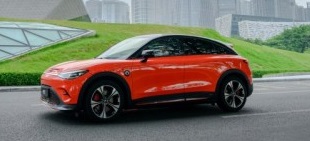Key specs
Smart #3 (Coupe, SUV) #3 2023,2024,2025,2026
What is the body type, Smart #3 66 kWh (428 Hp) AWD BEV 2023?
Coupe, SUV, 5 Doors, 5 Seats
How fast is the car, Smart #3 66 kWh (428 Hp) AWD BEV 2023?
180 km/h 111.85 mph
How many cylinders, Smart #3 66 kWh (428 Hp) AWD BEV 2023?
Electric,
What is the drivetrain, Smart #3 66 kWh (428 Hp) AWD BEV 2023?
All wheel drive (4x4),
How long is this vehicle, Smart #3 66 kWh (428 Hp) AWD BEV 2023?
4400 mm
173.23 in.
How wide is the vehicle, Smart #3 66 kWh (428 Hp) AWD BEV 2023?
1844 mm
72.6 in.
What is the curb weight, Smart #3 66 kWh (428 Hp) AWD BEV 2023?
1910 kg
4210.83 lbs.
Smart #3 (Coupe, SUV) #3 2023,2024,2025,2026 Specs
General information
| Brand |
Smart |
| Model |
#3 (Coupe, SUV) |
| Version |
#3 |
| Engine version |
66 kWh (428 Hp) AWD BEV |
| Year production start |
2023 |
| Vehicle type |
Coupe, SUV |
| Acceleration 0 - 100 kmh sec |
3.7 sec |
| Curb weight kg -lbs total |
1910 kg
4210.83 lbs.
|
| Overall length mm - inch |
4400 mm
173.23 in.
|
| Doors |
5 |
| Top Speed |
180 km/h 111.85 mph |
Engine specs
| Cylinders |
Electric |
| Weight / horsepower kg/hp - hp/tons |
4.5 kg/Hp
224.1 Hp/tonne
|
| Weight / torque kg/Nm - Nm/tons |
3.5 kg/Nm, 284.3 Nm/tonne
3.5 kg/Nm
284.3 Nm/tonne
|
| Fuel type |
Electricity |
| Powertrain architecture |
BEV (Electric Vehicle) |
| Electric motor power |
156 Hp
|
| Electric motor torque |
200 Nm 147.51 lb.-ft.
|
| Total available power |
428 Hp
|
| Totale available torque |
543 Nm 400.5 lb.-ft.
|
| Eng 56 |
Battery -66 kWh
|
| Eng 57 |
Electric unit layout - Front axle, Transverse
|
Transmission and Drive system
| Drive configuration |
All wheel drive (4x4)
|
Brakes
| Anti-lock brake system |
ABS (Anti-lock braking system) |
Steering
| Steering type |
Steering rack and pinion |
Wheels & Tyres
| Wheels size |
245/40 R20
|
| Wheels rims |
20 |
Passenger
| Passengers seats |
5 |
| Trunk space min liter | cu. Ft. |
370 l
13.07 cu. ft.
|
| Trunk space max liter | cu. Ft. |
1160 l
40.97 cu. ft.
|
Dimensions
| Overall length mm - inch |
4400 mm
173.23 in.
|
| Overall width mm -inch |
1844 mm
72.6 in.
|
| Overall height mm -inch |
1556 mm
61.26 in.
|
| Wheelbase mm - inch |
2785 mm
109.65 in.
|
Weights
| Curb weight kg -lbs total |
1910 kg
4210.83 lbs.
|
| Gross weight kg -lbs total |
2360 kg
5202.91 lbs.
|
| Capacities kg - lbs |
450 kg
992.08 lbs.
|
Fuel economy
| Fuel economy-190 |
Autonomy WLTP 415 km 257.87 mi |
Engine type
Electric
https://www.thecarspec.com/components/engine/electric

